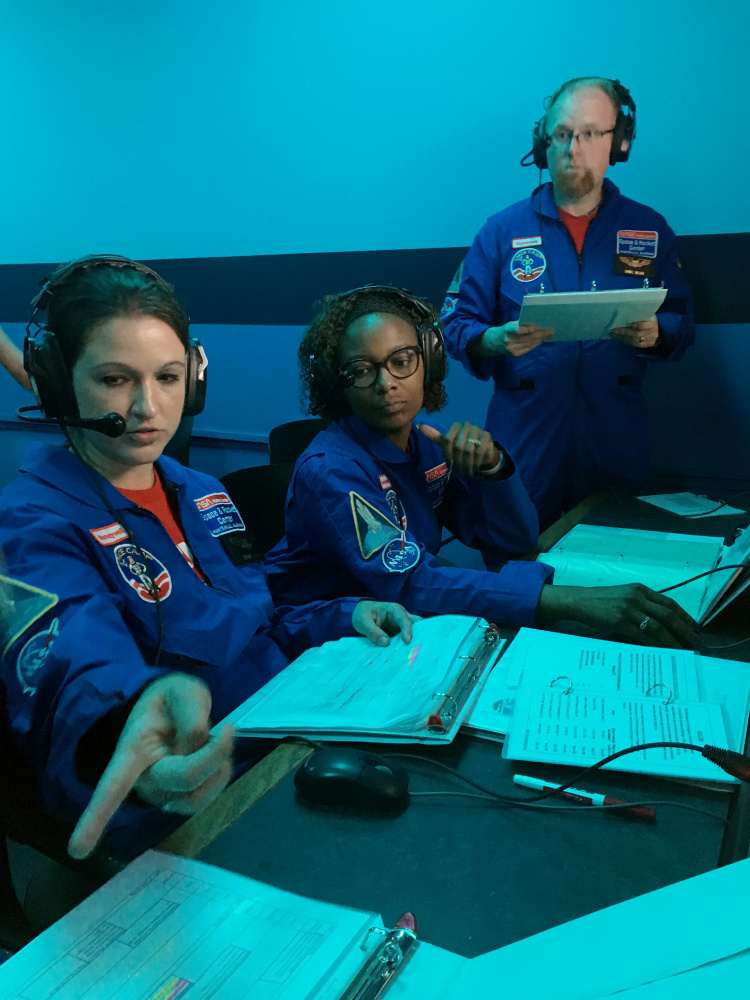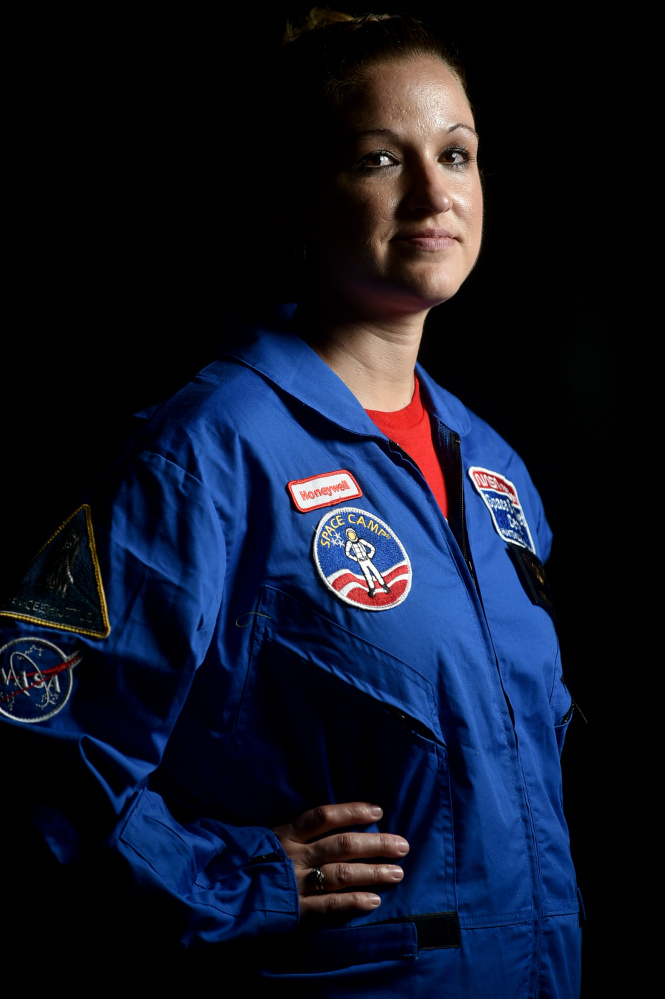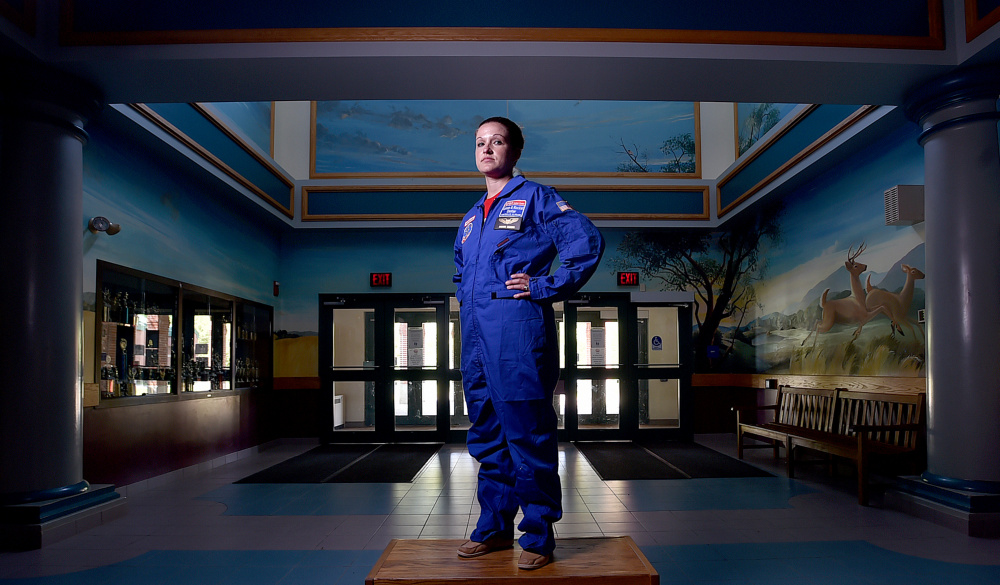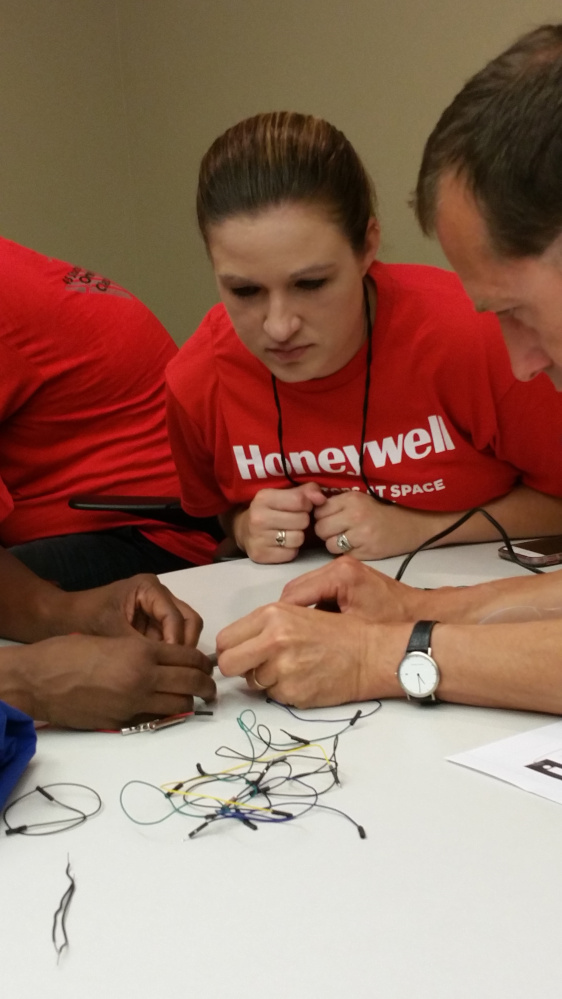In October, Vassalboro teacher Breanne Desmond took her sixth grade students on a trip to the Challenger Learning Center in Bangor. While there, the students took part in simulated missions and took on different jobs, like coding, communications or photography.
“I just thought it was so cool that they got to do these shuttle missions,” said Desmond, 36, who has worked for the Vassalboro Community School for one year.
So she decided to apply for a similar adult opportunity.
Applications to the Honeywell Educators at Space Academy were due in November, so Desmond acted quickly to submit her information. Math and science teachers who work with students age 10 through 14 are eligible for the opportunity, which provides professional development and simulated astronaut training for teachers.
The week of Jan. 9, she remembers they started to notify winners, so she started checking her email all the time.
Desmond was one of more than 200 teachers from 33 countries and 45 U.S. states selected for the one-week program.
Honeywell, which sponsors the program, paid for the tuition, airfare and dormitory housing at the University of Alabama at Huntsville.
“In a time where professional development opportunities are really limited, it just was that once-in-a-lifetime opportunity,” she said. “Not only did I get to live some of these lessons I would give to my students, I got access to a ton of resources.”
Desmond traveled to Hunstville, Alabama, in mid-June to the U.S. Space and Rocket Center, which is a comprehensive space flight museum that includes a rocket park, Spacedome Theater and NASA’s Educator Resource Center.
“I got to pretend that I was 12 again,” she said.
At the one-week program, Desmond designed, built and launched rockets, took part in two simulated space missions to Mars and the International Space Station, and participated in simulated training, like the multi-axis space test inertia facility that spins astronauts around. For her team’s engineering work, she won the Commander’s Cup.
She also learned leadership and classroom techniques and received a number of resources that she can download and use in her lessons.
And she met a number of colleagues from all over the world. One of Desmond’s teammates from Brazil is setting up a pen pal system.
The program allowed the teachers a chance to “train like astronauts do” for 45 hours in one week. But it also helped them see things from a different perspective, she said.
For example, the teachers had to do both a zipline and a helo dunker activity, in which teams are strapped into the body of a helicopter and plunged into a pool. Neither were very comfortable experiences, Desmond said.
“It put us in the kid’s shoes by asking us to do something we weren’t comfortable with,” she said, so they were able to gain insight about how their students may feel when they ask them to do difficult and foreign things. “It was overcoming more mental blocks.”
Now, Desmond said she plans to incorporate some of the resources she was given — like videos, slideshow presentations and articles — into the classroom, as well as some of the projects she took part in at the academy.
She’s started re-creating some of the materials they used for team building and communication activities as well, like a memory game made from a large tarp and duct tape.
She hopes to break down the barrier that students often put up for STEM (science, technology, engineering and math) subjects before they even try them.
Desmond often hears students say they “hate” science or they’re not good at math, but she hopes to reach them before they get to that mindset with fun projects, like Sphero — a coding game Desmond played while in Alabama. The participant had to use code and a smart phone to control a robot and navigate it around the face of Mars, she said.
But bringing opportunities like that into the classroom will take money, which Desmond said she foresees as a difficulty. In the meantime, she plans on applying for grants and looking for free — and therefore competitive — activities that could spark her students’ interests in science, like Orion’s Quest missions, which lets students take part in space-based research.
Opening up access to these different experiences is something Desmond is now passionate about. Growing up in Vassalboro, she said she “never would’ve thought of these careers” in science.
She’s also planning to continue the October trips to Bangor for sixth-graders to visit the Challenger, she said, although the funds will have to be raised each year.
According to the U.S. Department of Education, 16 percent of high schoolers are both proficient in math and interested in a STEM-related career. Yet STEM-related jobs are expected to grow by 8.9 percent from 2014 to 2024, compared to 6.4 percent growth for non-STEM jobs, according to the U.S. Department of Commerce.
Honeywell, in partnership with the U.S. Space and Rocket Center, created the scholarship program in 2004 to help educate the next generation of workers. The academy has graduated 2,776 educators from 62 countries and all 50 U.S. states, reaching a total of 3 million children.
“Technology is changing exponentially. Things we once held as impossibilities are reality — we are on our Journey to Mars,” said Deborah Barnhart, CEO and executive director of the U.S. Space and Rocket Center. “Educating the next generation of leaders and learners is key to global success.
“The Honeywell Educators at Space Academy program unites teachers with exciting tools and methods to change the lives of students around the globe.”
Madeline St. Amour — 861-9239
mstamour@centralmaine.com
Twitter: @madelinestamour
Send questions/comments to the editors.








